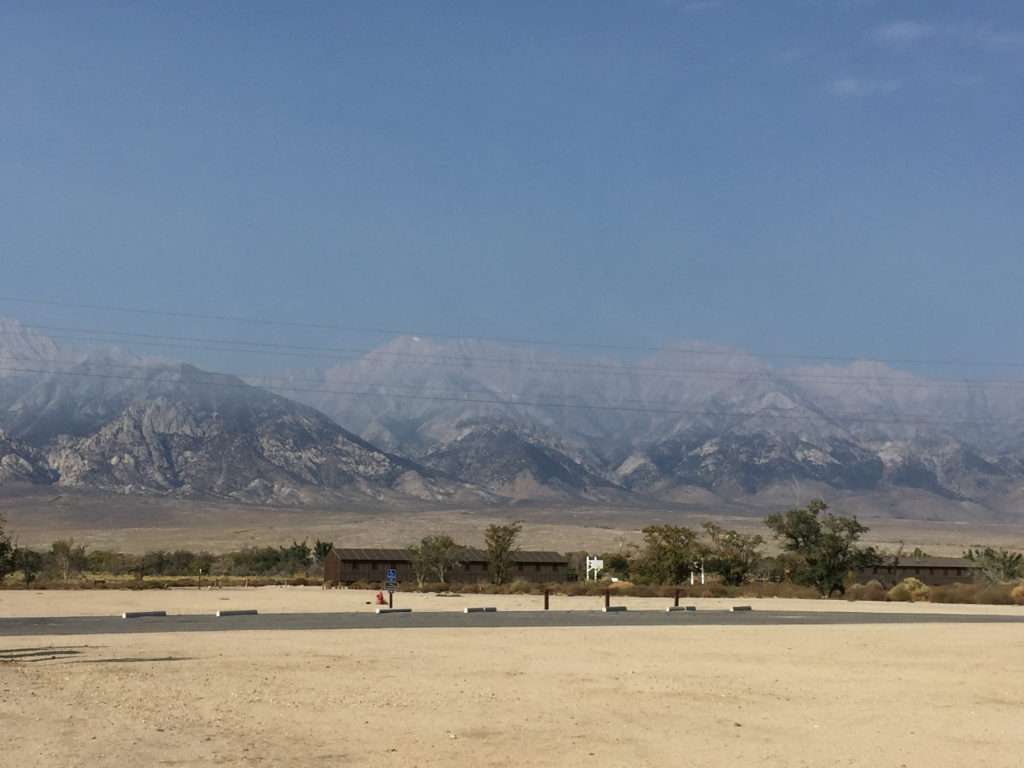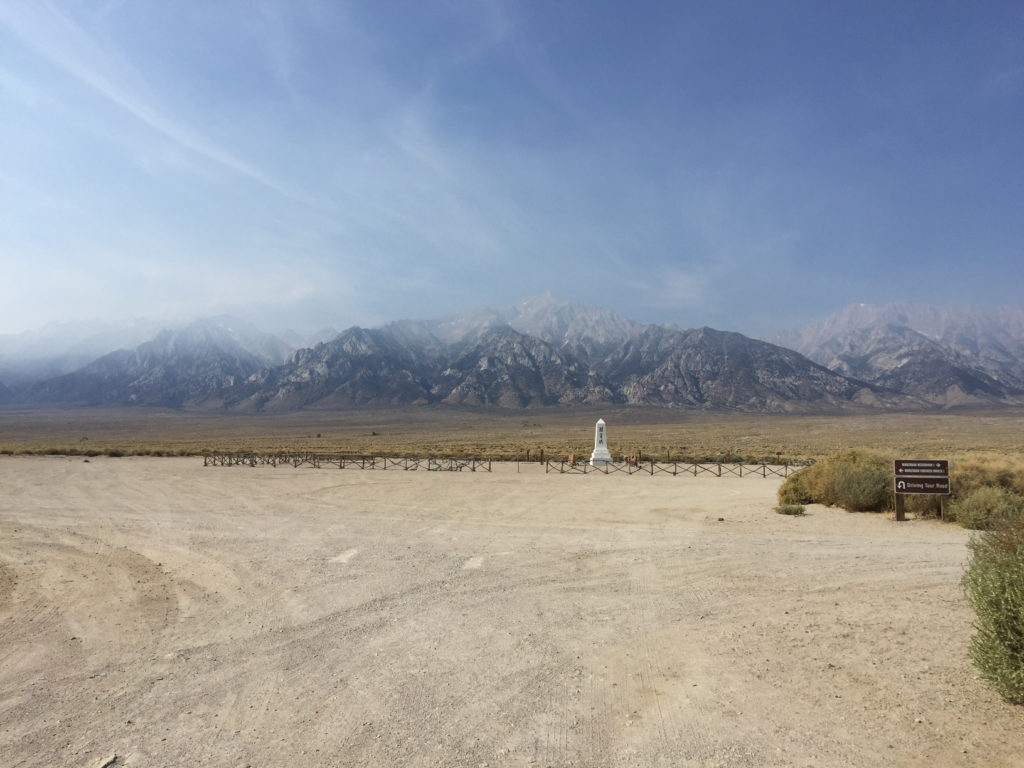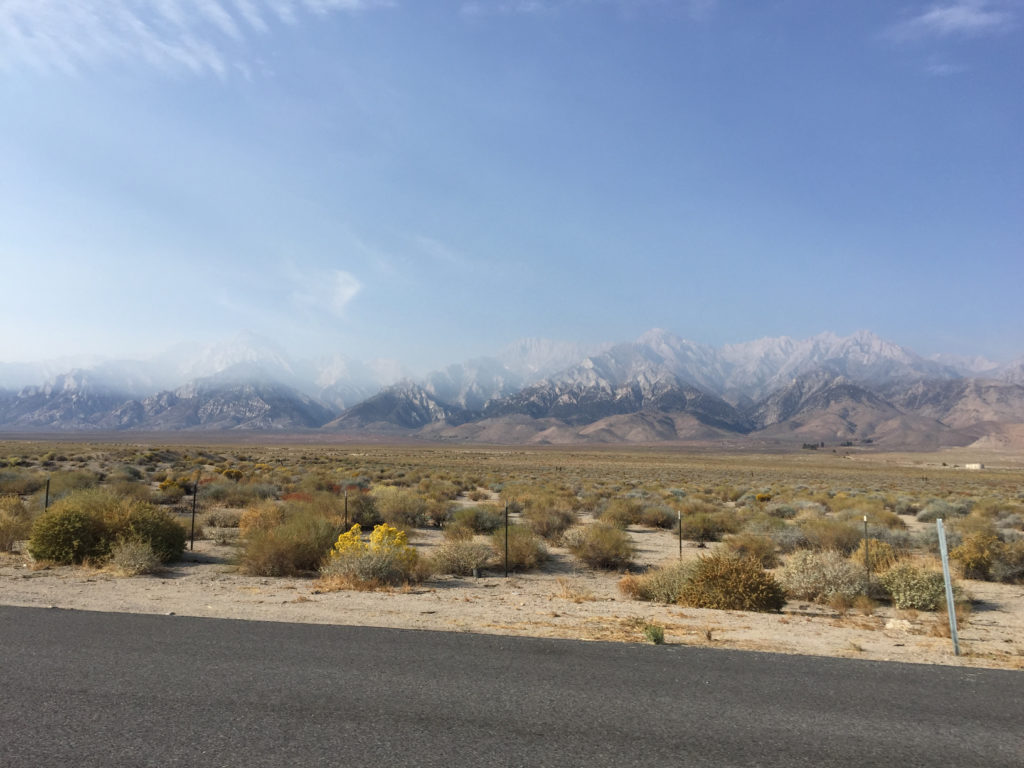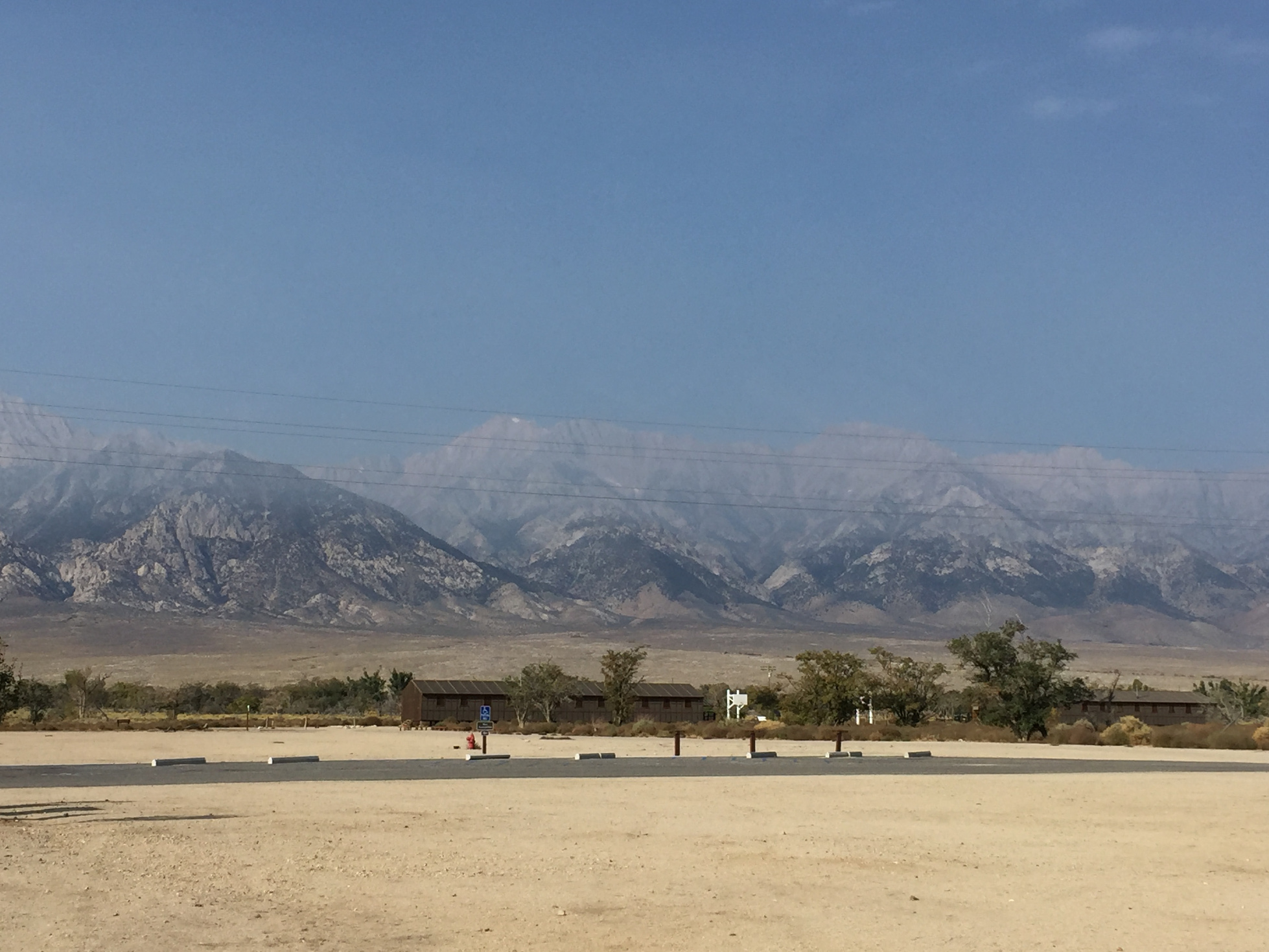Manzanar. You can’t visit it without being impacted in some way. It’s still a difficult place, even though many decades have passed. In fact, it was such a difficult place to visit that I hesitated to write about it after our visit last October. I didn’t want to treat it as a tourist attraction. Now, with all that is happening with the despicable separation of immigrant families, maybe it’s time I wrote about Manzanar.

What is Manzanar?
Manzanar was one of 10 concentration camps built in the United States, created to incarcerate more than 120,000 Japanese Americans and Japanese immigrants (who couldn’t return to a war zone they wanted no part of) during World War II. It was officially open from 1942 through 1945, and it would eventually unjustly hold more than 10,000 people.
These were people who were removed from the West Coast. They lost their businesses. They lost their homes. Families could only bring what they could carry. Half of them were children and teens. None of them were ever convicted of a crime. And yet, so much was taken from them – and I’m not just talking about material goods. The psychological damage was extraordinary, even if families were largely kept together. Men were then encouraged to fight for the very country who incarcerated them, while their families were still being held.
What is Manzanar Now?
What remains of the camp is now known as the Manzanar National Historic Site. When you enter the main building, I highly recommend making the time to watch the movie before exploring the exhibits. There is also an auto tour to the various camp buildings, markers and the cemetery.
On the tour, you’ll notice stonework that once designated gardens. There are markings for baseball diamonds. In fact, there are numerous signs of the people who desperately tried to make lives for themselves while trapped here (for no other reason than their ethnicity).

Why Visit Manzanar?
I hope that the more people who learn from first-hand accounts about places like Manzanar, the more critically people will think about current policy. Personally, I don’t like treating it as a tourist attraction. I haven’t posted any pictures from inside. And it’s not a place for selfies. Honestly, the whole gift shop thing made me uncomfortable, despite understanding that they want people to take reminders of the place out into the world.
It is an educational opportunity that should not be missed. The National Park Service has done a terrific job at providing powerful information about all the camps, and the specific stories of the people who were in this one. There are replicas of the housing units, photographs of the conditions and tales of hope and horror. It’s a powerful experience.

Where is Manzanar?
Manzanar is approximately 235 miles north of Los Angeles. Set in the dusty Owens Valley, at the base of the Sierra Nevada, you might miss it if you are cruising along on Highway 395 and not looking for it. Your GPS should bring you to:
Manzanar National Historic Site
5001 Highway 395
Independence, CA 93526
There are signs marking the way.


Thank you for writing a wonderful post while staying sensitive to the heritage of the place. Sometimes such places make you humble. There is cellular jail in Andaman islands and once you visit it, you don’t wanna take selfies instead just wish to live the lives of Indian freedom fighters.
That’s so interesting! Now I want to know more about the Indian freedom fighters!
I don’t know much about American history, but I do remember reading about this. I didn’t know the name of the camp however, and how horrifying it must have been for the Japanese immigrants and their families at the time. Well done for not posting any photos inside, or any selfies! It’s definitely a place with many painful memories, and would be disrespectful to their families. A wonderful read.
I simply can’t imagine what they went through!
I wish what happened in Manzanar weren’t so relevant to what’s happening right now.
I’m embarrassed to say that while I knew about this part of America’s history, it had never occurred to me that there were national historic sites. Now it’s saved on my maps so I can go the next time I’m in California.
There’s something about visiting a site that really changes how I understand the history. No amount of reading about concentration camps in Europe made me understand them the way walking through them has.
Right? It’s just so awful to see how relevant it all is.
It would be so important and interesting to visit Manzanar and it shows a reference to what is happening on the border now in terms of the children being separated. I have never been to a camp like that. I also want to visit Auschwitz in Poland. It is so important to see it first hand if you can.
I want to visit Auschwitz too. There is something about visiting these places that really makes you connect with what happened — and hopefully, compels people to stop it from happening again.
Wow, I have no idea how I’d never heard of this place before, especially because it’s located on the West Coast, where I live. I like what you said about not treating it as a tourist attraction because it definitely isn’t. I would be really interested in visiting though as I don’t feel like we do a good enough job of learning about this period in school. Thanks for sharing your experience.
I’m with you. I don’t really remember this being more than a brief mention when I was going to school.